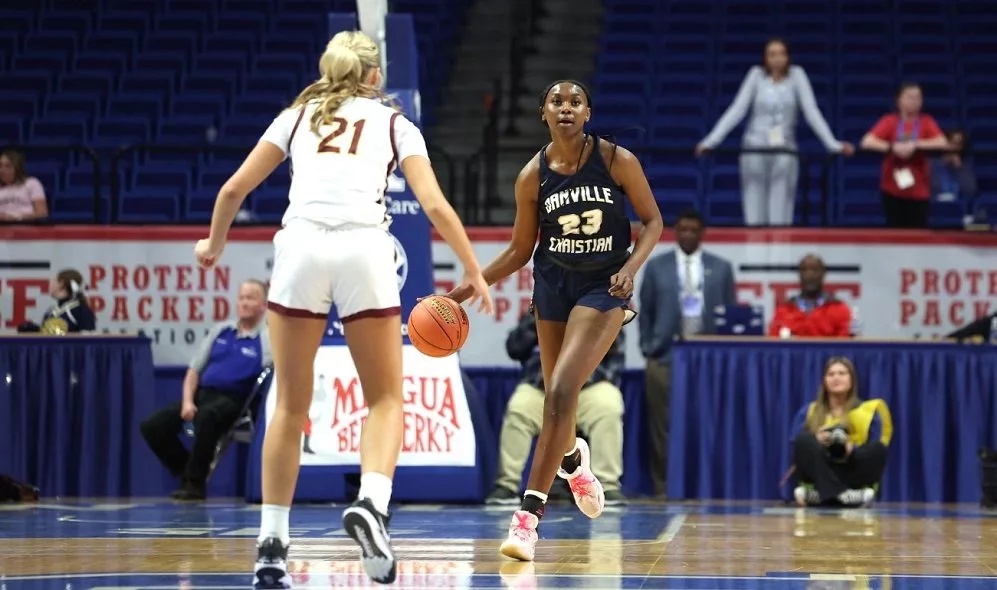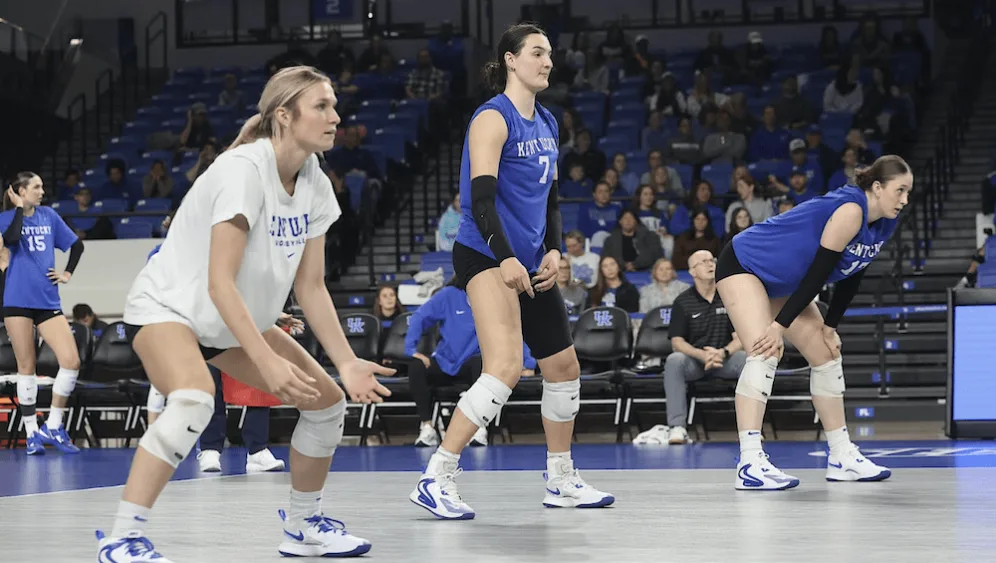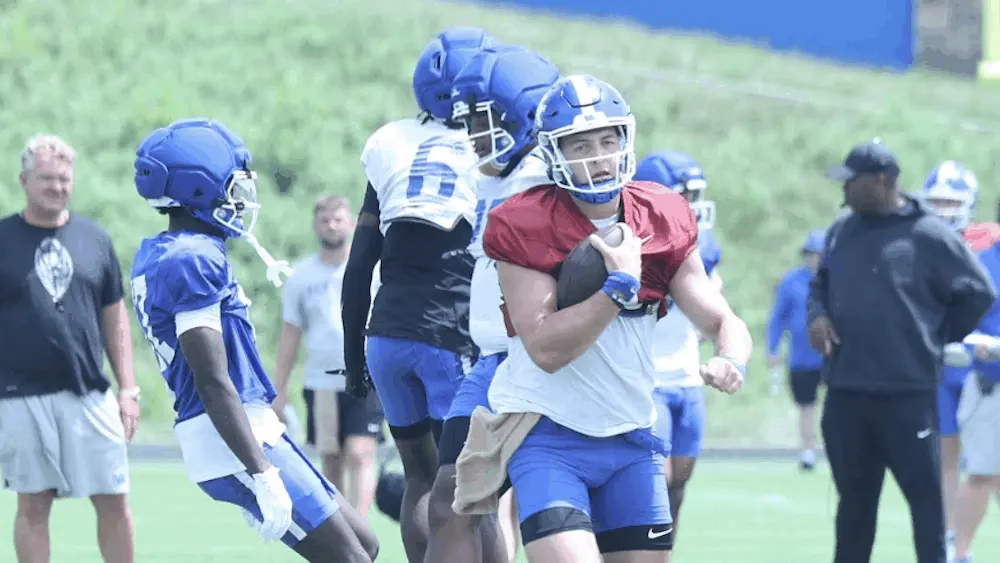
Tonia Witt Photo
Vaught’s Note: Mac Yocum is a former coach and athletics administrator/teacher/coach who is now retired but still actively involved in sports and loves high school sports.
By MAC YOCUM, Contributing Writer
The KHSAA is exploring a realignment for sports that are not already in classes. I wrote an article a couple of years ago that it was time for classes in basketball and those other sports, but the traditionalists will fight that to their dying breath. In that article, I proposed four classes, with the final four of each class going to the state tournament. The classes determine a class state champion, and then those four play to determine the Sweet 16 champion. It’s the best of both worlds, but I digress.
Back in 1993, the late Stan Steidel began pushing for a major realignment of the regions, starting in far western Kentucky and working eastward. That didn’t get anywhere. Now 30 years later it is time for the KHSAA to do the right thing and have a major overhaul of the current regional setup. Many of the foundations of the current setup go back to the days when some counties had 7 or 8 schools in one county. The travel between areas was difficult and time-consuming in some cases. The KHSAA has the opportunity now to make a change that would possibly not have to be revisited for quite some time.
A few years ago, when talking about football realignment, then KHSAA assistant commissioner Julian Tackett said in the Lexington Herald, “We need to take the politics out of it, or at least the perception of politics.” That sentiment is more prevalent today than ever. The Board of Control has one job, to do what’s best for all students. If a team has to move “regions” for the betterment of the whole, then so be it.
The first step, do away with districts and regions. Do as some other states do and have the teams in conferences. North Carolina and Indiana, for example, have conferences. The schools can play for the regular season conference title and the conference tournament champion, of course, goes to the state tournament. The days of having an equal number of teams in each “region” are gone. Populations have changed. Having teams in conferences based on their area easily allows for the addition or subtraction of schools if the need arises. Teams have to play a minimum of 16 games against other conference teams to qualify for the regular season title. The conference tournaments should be seeded based on RPI.
Now let’s look at a realignment and the rationale behind it. Since classes will never be part of the equation, this alignment gets the new conferences aligned by proximity and student population whenever possible. Except for one conference, they all have roughly the same average enrollment. It also puts schools in the same time zone together. Currently, there are two “regions” with some schools in the Eastern time zone and some in the Central time zone. This alignment also took into consideration the best or most used facility to host the current regional tournaments. I tried to keep the travel to a time frame that was easier for schools to get to games after school and back home on school nights at a reasonable time. So here we go.
The Jackson Purchase Conference ( enrollments are in parentheses): Christian Fellowship (76), Fulton City (79), St Mary’s (93), Community Christian (116), Fulton County (175), Carlisle County (205), Hickman County (208), Ballard Memorial (260), Livingston Central (328). Mayfield (545), Murray (553), Calloway County (860), Tilghman (882), Graves County (1099), Marshall County (1255), McCracken County (2002) The average enrollment would be 546.
The Lakes Conference: Heritage Christian (129), Dawson Springs (144), UHA (160), Lyon County (298), Russellville (334), Ft Campbell (394), Crittenden County (430), Caldwell County (546), Todd County Central (551), Trigg County (618), Union County (629), Webster County (678), Hopkins Central (778), Logan County ( 958), Hopkinsville (965), Christian County (1187), Madisonville-North Hopkins (1193). The average enrollment is 588.
The Pennyrile Conference: Whitesville Trinity (82), Cloverport (98), Mclean County (413), Owensboro Catholic (417), Hancock County (484), Edmonson County (592), Butler County (638), Breckinridge County (923), Ohio County (1145), Muhlenberg County (1147), Grayson County (1260), Owensboro (1336), Apollo (1511), Daviess County (1737), Henderson County (1968).
The Mammoth Cave Conference: Foundation (67), Caverna (209), Cumberland County (295), Clinton County (426), Metcalfe County (458), Green County (467), Monroe County (518), Glasgow (590), Hart County (679), Adair County (794), Franklin-Simpson (819), Russell County (841), Allen County-Scottsville (889), Warren Central (1027), Warren East (1031), Bowling Green (1295), Greenwood (1373), Barren County (1399), South Warren (1501). The average enrollment is 773.
The Knobs Conference: North Hardin Classical (97), Bethlehem (296), Campbellsville (329), Ft Knox (386), Washington County (560), Bardstown (656), Thomas Nelson (668), Marion County (674, Larue County (744), Nelson County (787), John Hardin (801), Taylor County (822), Elizabethtown (829), North Bullitt (1149), Bullitt Central (1364), Meade County (1519), Bullitt East (1570), North Hardin (1667), Central Hardin (1930). The average enrollment is 887.
The Metro West Conference: Evangel (38), Beth Haven (48), Whitefield Academy (184), Louisville Holy Cross (236), Desales (319), Mercy (511), Western (876), Jeffersontown (946), Doss (952), Valley (970), Iroquois (1098), Moore (1293), Fairdale (1393), Southern (1393), Butler (1422), Pleasure Ridge Park (1518), Fern Creek (1698). The average enrollment is 745.
The Metro East Conference: Portland Christian (131), Francis Parker (149), Presentation (153), Highlands Latin (155), WEB Dubois (171), Brown (231), Collegiate (269), Ky Country Day (298), Shawnee (426), Christian Academy-Louisville (640), Sacred Heart (750), Assumption (832), Waggener (867), St Xavier (1090), Trinity (1173), Central (1226), Seneca (1338), Atherton (1464), duPont Manual (1931), Male (1991), Ballard (2020), Eastern (2043). The average enrollment is 879.
The Ohio Valley Conference: Cornerstone Christian (60), Eminence (264), Frankfort (315), Trimble County (358), Gallatin County (494), Owen County (557), Carroll County (574), Henry County (625), Western Hills (822), Spencer County (992), North Oldham (996), Shelby County (1001), Collins (1183), Anderson County (1193), South Oldham (1342), Oldham County (1663). The average enrollment is 777.
The Northern Kentucky Conference: Heritage (36), Covington Latin (147), Villa Madonna (166), Newport Central Catholic (211), Ludlow (231), Dayton (259), Covington Holy Cross (322), St Henry (454), Covington Catholic (470), Beechwood (496), Notre Dame (497), Lloyd Memorial (693), Holmes (884), Boone County (1283), Conner (1444), Cooper (1462), Ryle (2014). The average enrollment is 651.
The Licking Valley Conference: Augusta (111), Calvary Christian (119), Robertson County (148), Williamstown (227), Bellevue (244), Bishop Brossart (305), Newport (363), Bracken County (368), Walton-Verona (549), Pendleton County (699), Mason County (841), Harrison County (868), Highlands (1014), Grant County (1079), Scott (1112), Campbell County (1557), Dixie Heights (1567), Simon Kenton (1866). The average enrollment is 724.
The Bluegrass Conference: Frankfort Christian (83), Paris (222), Model (241), Sayre (244), Lexington Christian (460), Lexington Catholic (711), Bourbon County (794), Franklin County (966), Scott County (1198), George Rogers Clark (1649), Frederick Douglass (1714), Tates Creek (1741), Great Crossing (1793), Bryan Station (1896), Paul Laurance Dunbar (1952), Henry Clay (2036), Madison Central (2225), Lafayette (2440). The average enrollment is 1243.
The Heritage Area Conference: KSD (24), Trinity Christian (66), Danville Christian (75), Burgin (150), Berea (355), Danville (481), Casey County (608), Mercer County (735), Garrard County (801), Rockcastle County (819), Boyle County (884), Lincoln County (951), East Jessamine (1179), Madison Southern (1209), West Jessamine (1305), Woodford County (1305). The average enrollment is 684.
The Southern Kentucky Conference: Somerset Christian (74), Pineville (187), Harlan (197), Barbourville (200), Lynn Camp (260), Williamsburg (282), Middlesboro (357), Somerset (524), Bell County (697), McCreary Central (735), Knox Central (765), Corbin (837), Wayne County (944), Whitley County (997), Harlan County (1002), South Laurel (1109), Pulaski County (1214), Southwestern (1271), North Laurel (1301). The average enrollment is 682
The Heart of Appalachia Conference: June Buchanan (24), Red Bird (56), Oneida Baptist (71), Cordia (74), Jackson City (80), Buckhorn (124), Jenkins (157), Owsley County (211), Lee County ( 264), Hazard (277), Wolfe County (368), Leslie County (470), Breathitt County (519), Jackson County (546), Estill County (646), Powell County (649), Clay County (720), Letcher County Central (724), Perry County Central (872). The average enrollment is 363.
The Coal Country Conference: Phelps (155), Paintsville (215), Pikeville (326), Betsy Layne (405), East Ridge (410), Prestonsburg (490), Martin County (529), Belfry (531), Shelby Valley (531), Floyd Central (557), Knott County Central (558), Morgan County (597), Pike Central (603), Magoffin County (639), Lawrence County (739), Johnson Central (955). The average enrollment is 515.
The Northeast Kentucky Conference: Rose Hill (33), St Patrick (63), Fairview (199), Menifee County (286), Nicholas County (295), Elliott County (302), Raceland (305), West Carter (525), Bath County (619), Lewis County (624), Fleming County (658), Russell (669), East Carter (727), Greenup County (849), Ashland (895), Boyd County 915), Rowan County (1020), Montgomery County (1289). The average enrollment is 570.
In this alignment, several schools would move to new conferences, or “regions”. In the early days of the KHSAA schools changed “regions” almost yearly for several years. While this alignment might seem radical, it is certainly not as radical as the KHSAA decision in 1939 to make the 7th region a three-team region. That’s right, a three-team region. Male, duPont Manual, and St. Xavier made up the entire 7th region. Some newspaper accounts said it was to ensure that one of the three largest schools in the state would always make the Sweet 16. Other accounts said it was to help the smaller schools that were with the Big 3 to have a better chance to make the Sweet 16. Either way, it sets a precedent that any team can be moved if it is deemed in the best interest of everyone involved. That is what my alignment does. It aligns schools in a way that is for the greater good.







5 Responses
I have no problem with this alignment. Here in 6th district there’s only 3 teams in it Henderson Co., Union co, and Webster co. The district tourney is not been set up fair and not as exciting as it used to be when it had 4 teams in it back in the 70;s
Marysville St Patrick?
Maysville St Patrick
Well the 55th District in the 14th Region only had three schools since Knott County was moved to the 53rd District and Riverside once part of the 55th couldn’t get enough interests for their two basketball programs and this dissolved their athletic teams. The 53rd which actually has five now which is at the least one school too many. Perhaps a re alignment would be good at this juncture for the schools that have now consolidated and schools no longer with the enrollment or interests
I’ve read this idea many times through the years. I don’t get the idea of winning a state championship and then go play another game, or two. You win a state championship – you’re done. No reason to take a chance on losing after winning the state.
The best of both worlds is the way it is now. Lyon County could win an All "A" Classic state championship and still have a chance to win the 2nd Region and win the traditional state tournament. Others have been in that position before to play for both – University Heights, Paintsville, Hazard, Harlan…
No reason to mess up with the best state tournament on the planet.